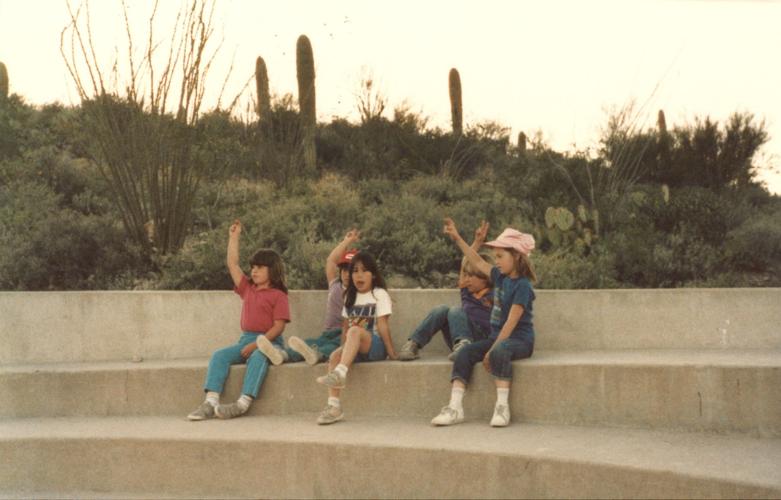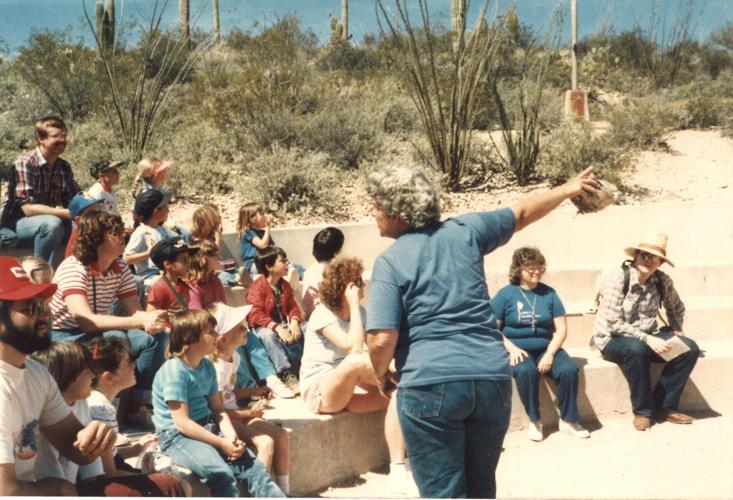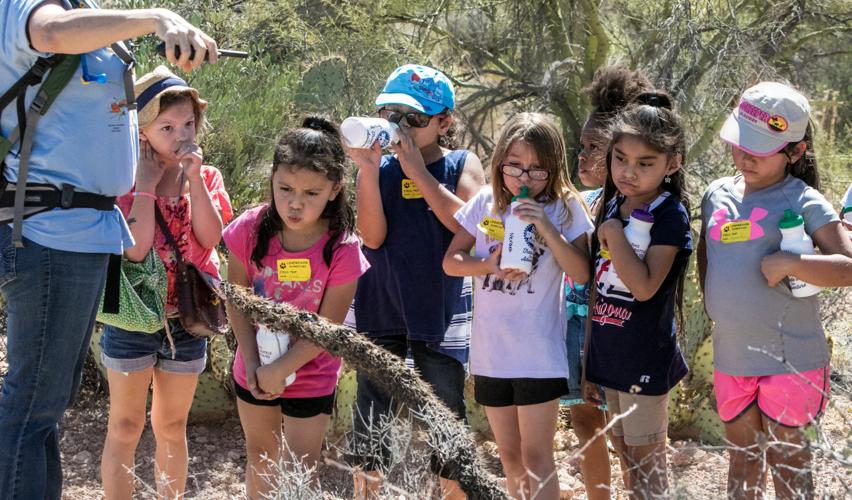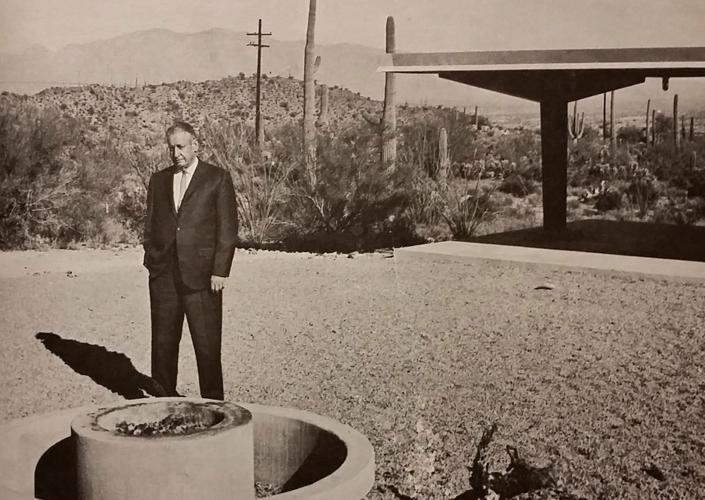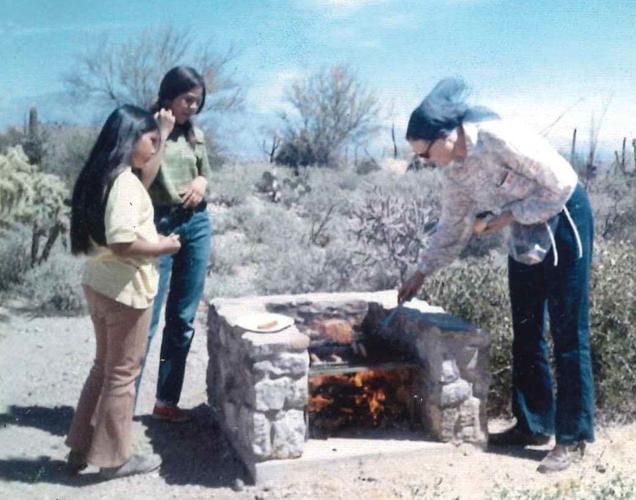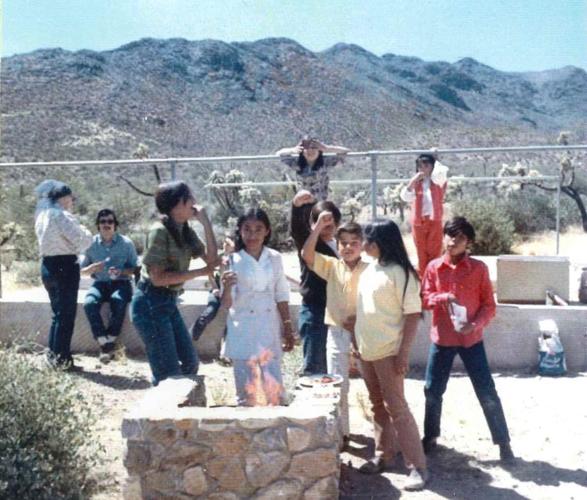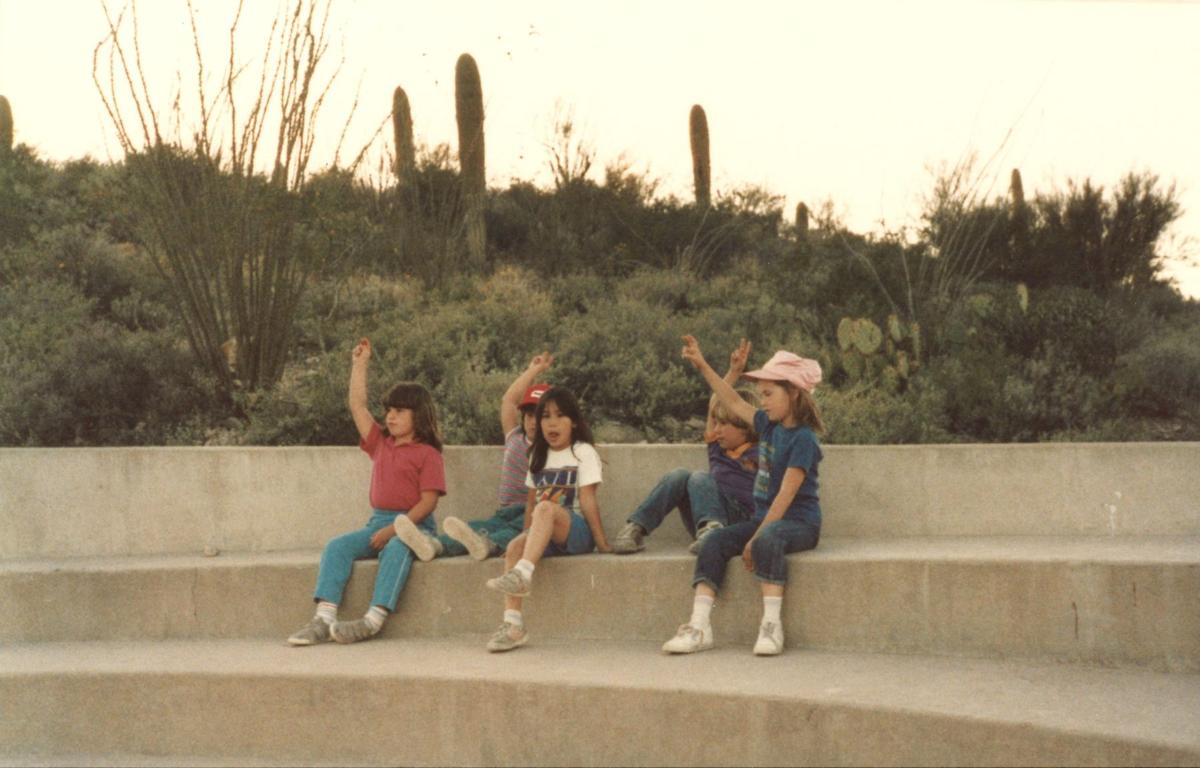Marilyn Ludwig was one of the first teachers to take her classes to Camp Cooper in the late 1960s.
It was pretty primitive then, the 87-year-old recalled. There were no cots or buildings like there are now. In fact, it wasn't even officially Camp Cooper.
It was just a property acquired by Tucson Unified School District in the 1940s as a potential school site.
"As Tucson expanded in other directions, it became clear it wouldn't be used for that purpose, but teachers on the west side realized the district had this property and they started bringing classes out and hiking the desert," said Colin Waite, director of what is now called Cooper Center for Environmental Learning in the Tucson Mountains. "They would park on the side of Trails End Road and hike trails with children and explore a pristine piece of the desert."

Camp Cooper was named after Herbert Cooper who was appointed Coordinator of Auxiliary Agencies for TUSD in July 1953. The 10-acre site was purchased, thanks to him, as a potential location for a new school. Source: TUSD's "First One Hundred Years"
Somewhere around the late '60s or early '70s TUSD hired a naturalist and turned the site into an environmental center that would be used to educate the district's students. A dirt road leading to camp was created, concrete pads were put down and big canvas tents were installed. In 1974, cabins and classroom spaces were built in place of the tents.
The 10-acre property was officially dedicated as Camp Cooper on Feb. 26, 1974.
It became a place to give Tucson children an opportunity to discover the desert around them through hands-on activities and programs on desert ecology, natural history and natives of the Sonoran Desert.
It was an experience Ludwig loved to share with her students. It changed them, she said.
"You saw a different side of the children there," Ludwig said. "One time I had a rowdy class and I said, 'listen if I hear any bad language you're gonna call your parents to pick you up and they're not gonna be happy.' But, when we got out there, they were so happy and interested in what we were doing."
Getting students outside of the classroom is the essence of Cooper Center. But, it's also a place for University of Arizona students to get real-world teaching experience.
In 2008, TUSD formed a partnership with the UA College of Education to turn Cooper Center into a place that benefited both institutions.
"The district wanted to keep camp open, but wanted somebody else to operate it," Waite said. "That's when the College of Education came in. All programs have transitioned from naturalist-based to a discovery-based exploratory learning model for education. Since then it has been a place for educators to train on doing high quality education. It's a training ground for young educators to see how important it is to get kids out of the classroom and into a contextual place to inspire them to learn about their world and to care about their world. To see, feel and touch. Hands-on is a big part of it."

Manzo Elementary School's 5th grade class at Camp Cooper in 1971
More than 130,000 children have been through programs at the center over the years. The number fluctuates year-over-year or over generations, Waite said.
To reconnect with those alumni, Cooper Center is hosting a reunion and open house next Saturday, giving them a chance to relive their favorite camp memories. The event is also open to anyone who wants to see what Cooper Center is all about.
In the meantime, we sought out former campers to share some of their favorite memories of Camp Cooper.
Roseanna Gonzalez, attended Cooper in 1996
I remember going out and doing scavenger hunts, searching for the different animals and insects on our list. It's crazy, because it would feel like a long voyage; stopping to eat our lunches outside among the wildlife.
I remember playing hide-and-go-seek, and one of my friends named Nick hid in a cage of cactus and got stuck. The only way for him to get out was to come out with numerous cactus stuck to him. He cried so much! I felt bad for him; it took hours to get them off of him.
It was the very few good memories of my childhood when it came to school... sad to say.
Annie Holub, 39, teacher, attended Cooper in 1986
I remember hiking around the desert looking for rattlesnakes, and excavating owl pellets. My six-year-old self was very grossed-out by the tiny mouse bones and bits of fur in the pellets.
Lots of our parents came with us because we spent the night there and slept on cots in the cabins. We were given the option of waking up at midnight or 3 a.m. — or some crazy time for a first-grader used to going to bed at 8 — to see Halley’s Comet outside and my mom and I decided to do it.

Camp Cooper, circa 1986
It was very cold when we woke up and I was apprehensive but I remember my mom telling me that it was a historic event and maybe the only chance I’d ever get to see it. Those of us who woke up huddled outside with the Camp Cooper staff and looked up at the sky and I saw a small white dot with a little tail on it up in the sky.
Looking back on it, I think that experience was integral to my sense of place and belonging here in Tucson. Every year for the rest of elementary school we asked our teachers if we could go back to Camp Cooper because it was this enigmatic place in our minds, unlike any other field trip we’d experienced after.
Brandyn Enfield, 43, attended Cooper in the mid 1980s
I remember making arrowheads, and learning facts about desert plants and animals. On the overnight trips we sang camp songs and ate s'mores. As a low-income kid it was my only opportunity to experience summer camp even if it was only one night and not summer.
Eric Corrales, 32, attended Cooper in 1993 or 1994
I just remember it was the highlight of the year, the field trip everyone really enjoyed. We didn’t get to spend the night there, but it was just going out and spending the day out in the desert and walking around and seeing the plants and animals and having lunch out there. It was a really unique experience, something most kids in urban areas don't get to see.
I remember we did these activities where we’d break apart animal feces and see stuff inside and learn about the life cycle about how everything works. I know the school was on the west side of the town so we were a little closer to the desert but it's just different being out there and getting to walk and you're so far removed from buildings and stuff like that.
Michael A Halle, 53, attended Cooper in 1974 and 1975
The nature hike! But the night-time gathering of food and dancing was the most memorable. My dad was one of the chaperones and if that wasn't bad enough, he danced '50s songs with my friend's Mom!! It was a great time!

Fifth grade students from Manzo Elementary School hang out near the grill at Camp Cooper in 1971.
Marilyn Ludwig, 87, retired teacher
We went for an overnight and the next morning the county turned the water off so the toilets didn't work. ... So what do kids want to do when they get up in the morning? First thing they do is head for the bathroom. We had 70 kids out there. So we gave them each a big black garbage bag and toilet paper. We sent the girls in one direction and boys in another direction because the toilets didn't work. Then somebody had a big drinking thing and filled it at a gas station with water so we could make Tang.
Rachel Waldrip, 11, 5th grade, attended Cooper in 2017
On the first night, we roasted marshmallows at the fire pit and we had a dance party with a limbo contest. This was great because we got to have a lot of fun and make a lot of noise, and nobody told us to calm down or quiet down. Everyone enjoyed it together.
Michael Hicks, attended Cooper in 1967 or 1968
It was the total experience. ... One of the things I distinctly remember they taught us in regards to short horned lizards — we called them horny toads — and the fact that they are very territorial and if you mess with where they live, they end up dying. And you don't see them very much anymore because everywhere you turn around we've disrupted their habitat and they die. That's probably the main thing that stuck with me because I remember seeing them all over the place when I was a kid and now you just don't hardly ever see them. ... I love Camp Cooper and I want to make sure it stays and I think everybody needs to go out there and look at what they do out there at Trails End. It's pretty phenomenal. The work they do and the commitment they give.
Will Pope, 12, attended Cooper in 2015
I would have to say my favorite memory from that trip was the overnight stay. That was my first ever overnight stay. I got to sleep in a cabin with all of my friends and at night if I woke up i could just listen to the nature around my cabin and go straight to sleep again.

First-graders from Lineweaver Elementary School, left to right: Alethia Gouge, Emily Rodriguez, Breanna Merrill, Nevaeh Matsche, Alyssa Enriquez-Kenney and Alysia Ahumada, explore the desert during a field trip to Camp Cooper at 5403 W. Trails End Road in Tucson on October, 2017.
Claire Pope, 10, went to Cooper in 2017
I think that the best thing I did at Camp Cooper probably would have been doing all the activities. We were basically having fun and learning how to save the environment.
I think there was an activity called time capsule where we had to find these time capsules and that was my favorite one. We got to learn the cycle of animals and the cycle of plants and the cycles would be in the time capsules.
If you go
What: Camp Cooper Alumni Reunion and Open House
When: Saturday, April 21, 5-9 p.m.
Where: Cooper Center for Environmental Learning, 5403 W. Trails End Road
Cost: Free
Info: There will be food trucks, astronomy and a huge Cooper campfire.
RSVP: COE-CooperCenter@email.arizona.edu or 626-1825
Looking forward, Waite says the biggest goal for Cooper Center is to serve a broader cross section by having events that are open to the public.
The center is also in need of renovations and updates, but its hands are tied until it is more financially sustainable. It is currently in a year-to-year fundraising cycle, scrambling for grants and contributions every spring.
Cooper Center relies on community support and is currently in its spring crowdfunding campaign. If you would like to donate, click here.


